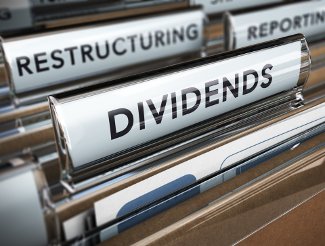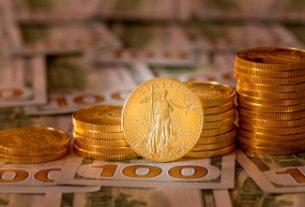When most people think of dividend investing they think of blue-haired old ladies who bought stock in GE, GM, or 3M back when those companies were better known as General Electric, General Motors, and Minnesota Mining and Manufacturing. It’s a conservative approach to investing and wealth creation that has largely gone overlooked over the past 20 years as the dotcom bubble, the housing bubble, and Dotcom 2.0 got investors thinking that they could get rich quick. Now that stock markets are starting to show signs of weakness and high-flying tech stocks are getting battered, more and more people are looking to dividend investing as a method of building wealth. But just how good is it?
What Are Dividends?
Dividends are money paid to a company’s shareholders out of the company’s profits. While everyone today associates growth in stock investments with increases in share prices, payment of dividends can also play a role in wealth creation. Companies generally keep most of their profits as retained earnings, plowing it back into the business to keep growing.
Older, more established companies feel confident that they don’t need to retain 100% of those profits, and so they reward their shareholders by paying dividends. The amount of the dividend is normally announced ahead of time, and the ratio of the dividend payment to the company’s share price is known as the dividend yield.
Because the companies that pay dividends are normally larger, older, and more established, their share prices aren’t supposed to be prone to big swings up or down, which is why dividend investing has often been characterized as a conservative approach to equity investing. It was a traditional approach taken by older retirees who would live off the dividend payments of their stocks so that they didn’t have to touch their principal.
Problems With Dividend Investing
One of the problems with dividend investing is that companies can decide on the spur of the moment to reduce their dividend payments or stop them altogether. That leaves those dependent on dividends for income in a tough spot. And that happened quite a lot during the 2008 financial crisis and its aftermath.
There is a group of stocks known as the “Dividend Aristocrats,” companies that have paid out consistently increasing dividends every year for at least 25 years. However there are only about 50 or so of those companies, versus about 6,000 or so total stocks traded on the New York Stock Exchange and Nasdaq. And because the Dividend Aristocrats are so well known, investing in them is a strategy shared by many other investors, meaning it can be hard to break away from the pack.
Benefits of Dividend Investing
One of the benefits of dividend investing is that, in addition to stock price appreciation, you receive a dividend. So if the price of the stock you own appreciates only 5% annually but you receive a 2% dividend, you’ve outperformed someone whose stock in another company grows 6% annually. Dividend stocks also tend to perform better than overall stock indexes during downturns, with the S&P’s Dividend Artistocrats Index losing less money than the overall S&P 500 Index in 2008.
If you’re fortunate to invest in a good dividend stock you’ll still receive dividends even when stock prices are cratering. And anytime you receive dividends you can either choose to use them as income or reinvest them into the company’s stock to further grow your portfolio.
Is There Another Way?
At the end of the day, however, dividend stocks are still stocks, subject to the same peaks and troughs as any other stock on the market. That makes them a risky investment for those looking to maintain their wealth in the face of financial turmoil and economic uncertainty. While the best performing dividend stocks may lose less than overall stock markets, they still lose. And dividend payments aren’t guaranteed.
Contrast that with gold, which gained 25% while stock markets lost 50% during the financial crisis. That’s the type of asset you want to diversify your portfolio in a bear market, something that gains value while everything else around it loses value. So if you think that switching from FANG stocks to dividend stocks will be enough to protect you from major losses during a stock market crash, you’ll find out the hard way that you’re wrong.
Properly diversifying your portfolio with countercyclical assets such as gold is crucial to maintaining as much wealth as possible during a bear market. The more money you can keep (and make) during a bear market, the better positioned you’ll be in the future once markets pull through. And with the ease of investing in gold through a gold IRA, you can even roll over existing retirement assets into gold quickly, easily, and tax-free. If you’re worried about the safety of your portfolio, look to gold to protect it where other assets can’t.
This article was originally posted on Goldco.




